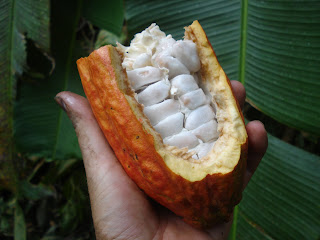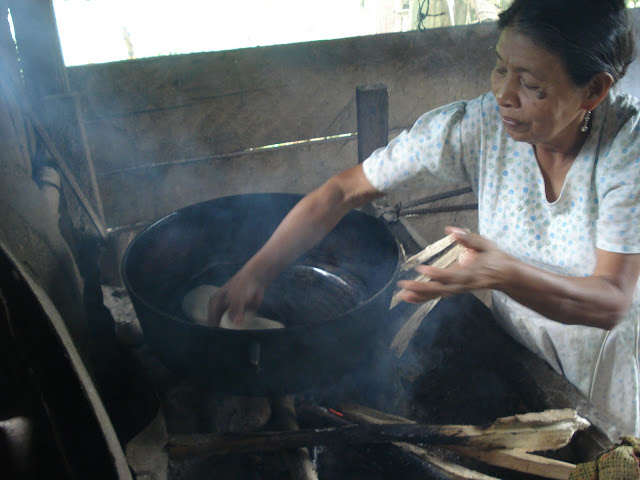
Just a quick note to send out my Holiday greetings to all of you that I didn´t get to get in touch with. I hope you all are having great times with friends and family. I for one, can´t complain. I was up before dawn on Christmas Eve, waiting on my dock out on the Carribean for the boat back to the mainland, and then a couple of truck and bus rides up and over the mountains and down to a beach on the Pacific coast for a reunion with a group of volunteers from my training group. The surf was crashing, the weather was balmy, and we had the beach virtually to ourselves.

I felt slightly guilty about leaving for the holiday rather than staying in site, but the Ngäbes don't really have a long-running Christmas tradition--either secular or religious--and the impression I´d been getting was that it was going to be a day not that much different than any other in Bahía Azul. But reconnecting with the crew from training on the other hand turned out to be just perfect. We had lots of stories to share, moral support to offer, and laughter to make your face hurt. Christmas morning even included a white elephant gift exchange, from which I came away with a nice plastic tarp--an excellent campo gift.
It was a great get-away, and felt perfectly timed to keep at bay any possibility of the holiday blues. Now I'm feeling fully recharged and anxious to get back to site tomorrow and and get back to work. Happy New Year all.
 They tell me that getting the boat down to the sea will require a ¨junta¨or communal work day that will involve twenty or thirty men. That´s something I want to see. A more tame and more common junta, and one I regularly join in on, involves mowing the grass panamanian style--
They tell me that getting the boat down to the sea will require a ¨junta¨or communal work day that will involve twenty or thirty men. That´s something I want to see. A more tame and more common junta, and one I regularly join in on, involves mowing the grass panamanian style-- which is to say, a row of men with machetes hacking away at the bush for several hours. As impossibly inefficient as it sounds, these guys are really good with their machetes and make surprisingly fast work of it. By comparison, my machete skills are pretty weak, but gradually getting better.
which is to say, a row of men with machetes hacking away at the bush for several hours. As impossibly inefficient as it sounds, these guys are really good with their machetes and make surprisingly fast work of it. By comparison, my machete skills are pretty weak, but gradually getting better.
 Then with a sharp eye and steady hand on the chain saw, he milled out the nicest 1 x 12 tablas, 4 x 4´ beams and 2 x 4 studs you´d ever want to see. Hauling these dense timbers back through the forest is another job in itself, and one for someone more sure on their feet in this setting than me.
Then with a sharp eye and steady hand on the chain saw, he milled out the nicest 1 x 12 tablas, 4 x 4´ beams and 2 x 4 studs you´d ever want to see. Hauling these dense timbers back through the forest is another job in itself, and one for someone more sure on their feet in this setting than me. 
 I spent the week before Thanksgiving working with another volunteer over on the Carribean side of the Peninsula build a composting latrine on the gorgeous beach that´s pictured at the top of this post. The project was a good learning experience in many ways, full of challenges with the rainy November days, the need for improvising to overcome shortages of tools and materials, and just the unique task of mobilizing the local work force.
I spent the week before Thanksgiving working with another volunteer over on the Carribean side of the Peninsula build a composting latrine on the gorgeous beach that´s pictured at the top of this post. The project was a good learning experience in many ways, full of challenges with the rainy November days, the need for improvising to overcome shortages of tools and materials, and just the unique task of mobilizing the local work force. Nonetheless, the latrine base is finished and ready for the privy or casita to be added above. I plan to do a lot of work with latrines, as there are almost none in my community, but I´ll save all that for another day.
Nonetheless, the latrine base is finished and ready for the privy or casita to be added above. I plan to do a lot of work with latrines, as there are almost none in my community, but I´ll save all that for another day.











